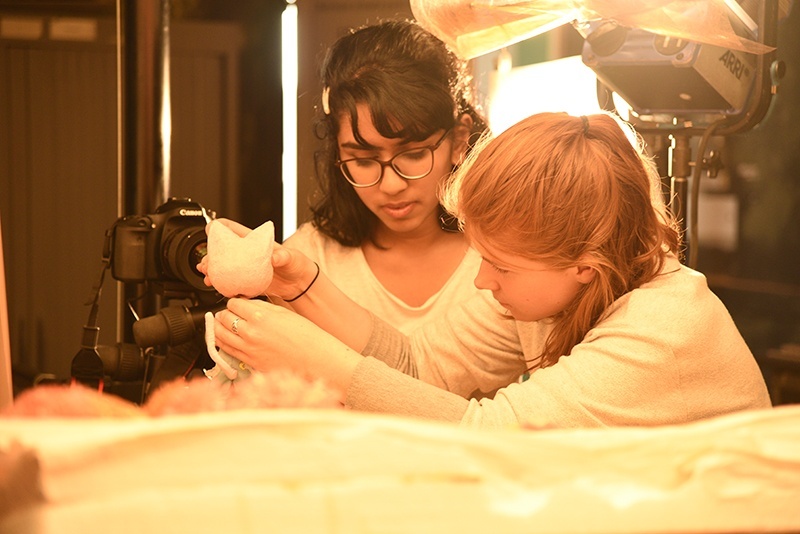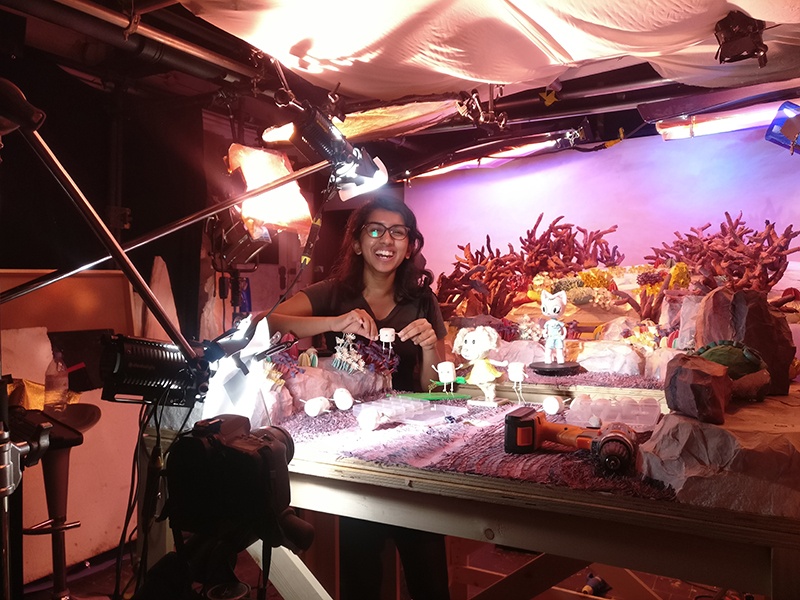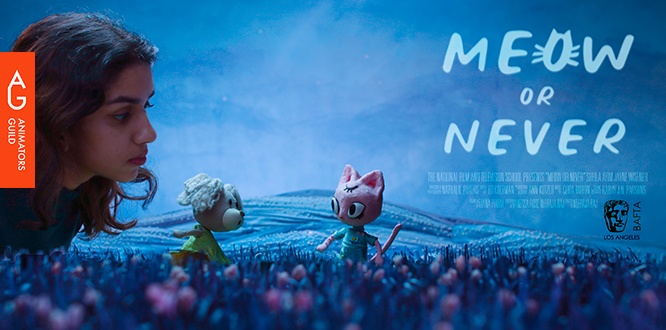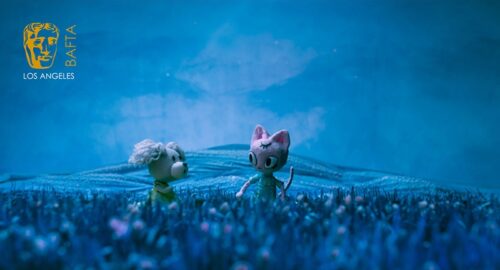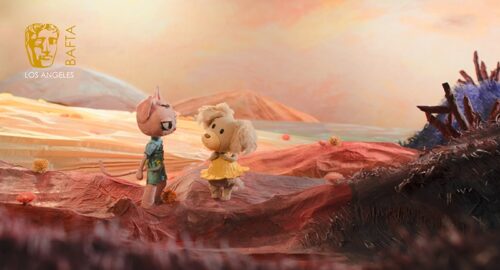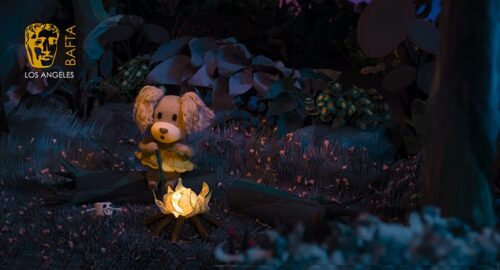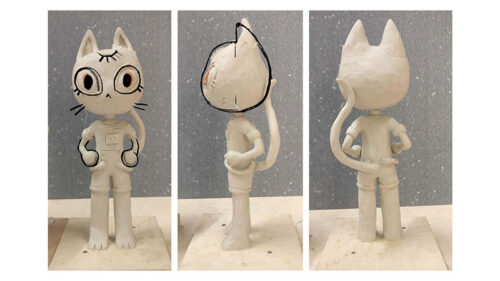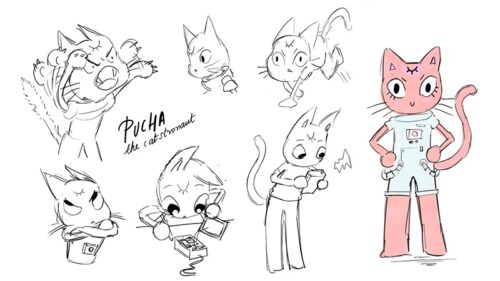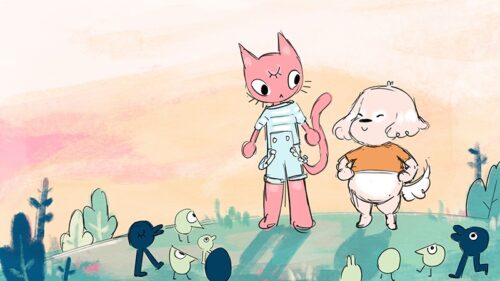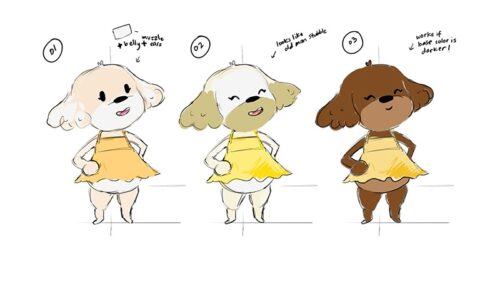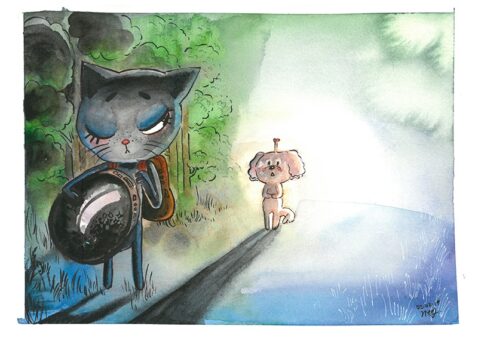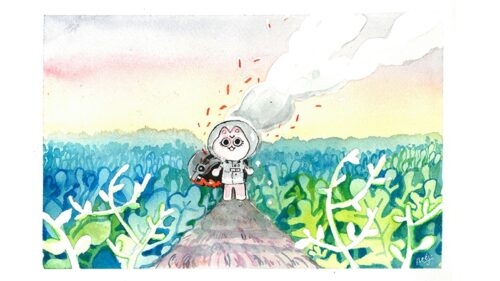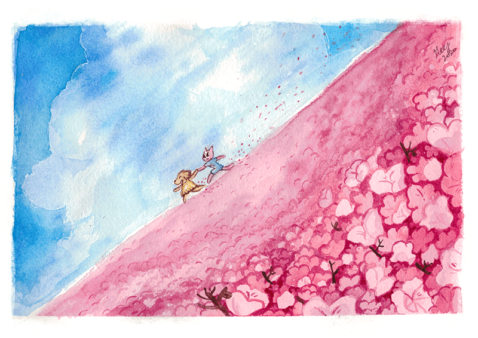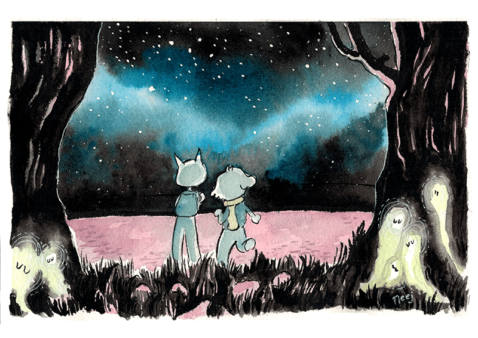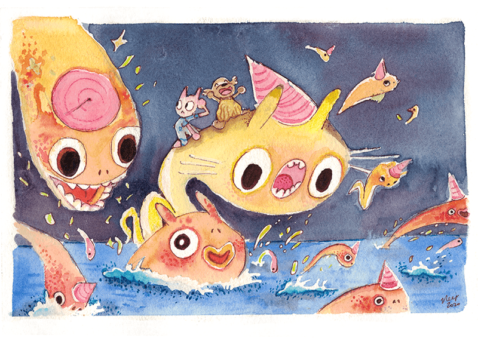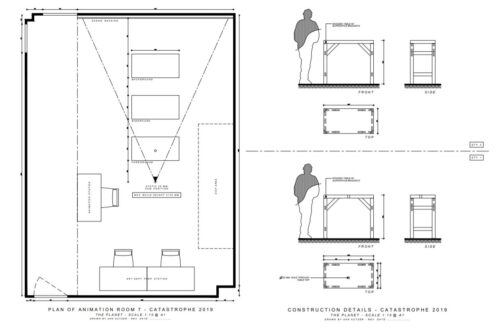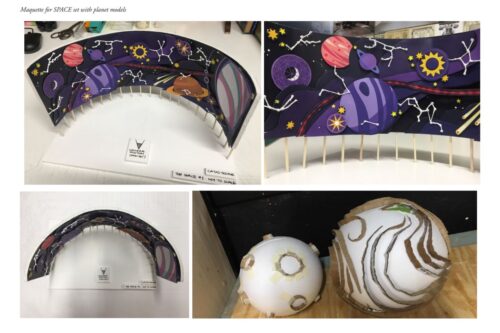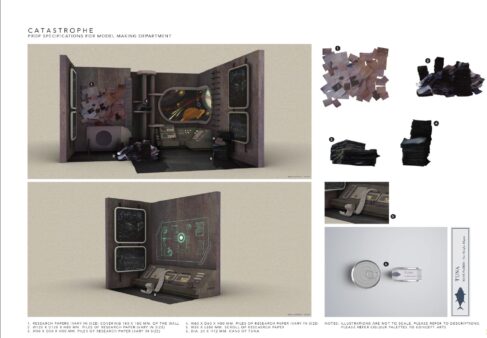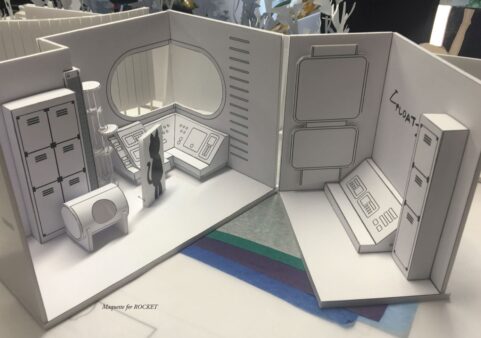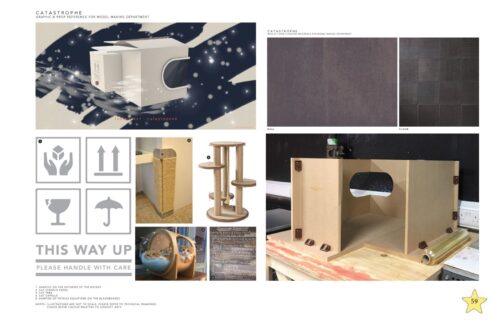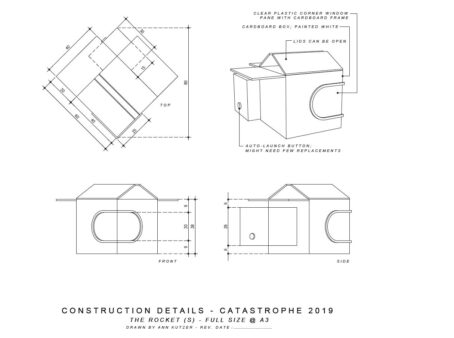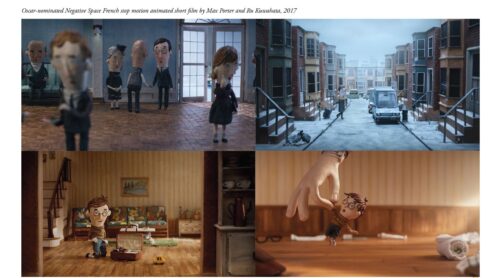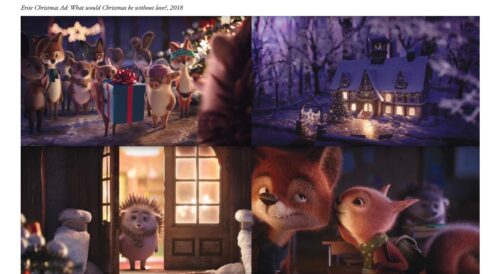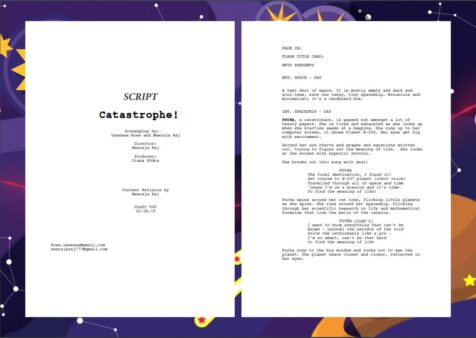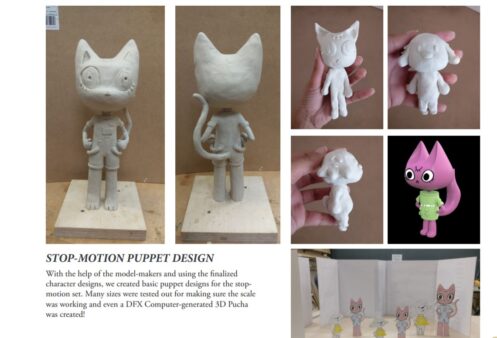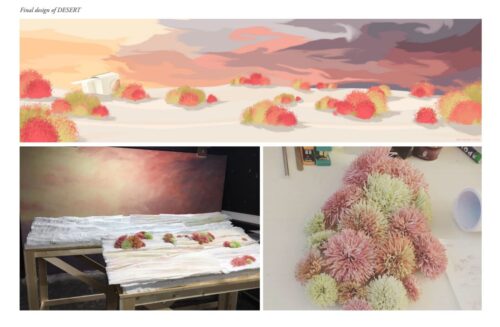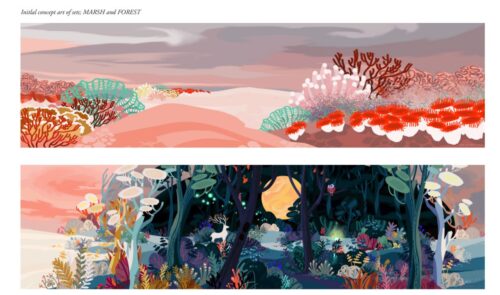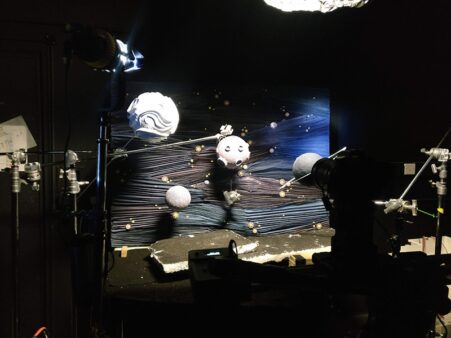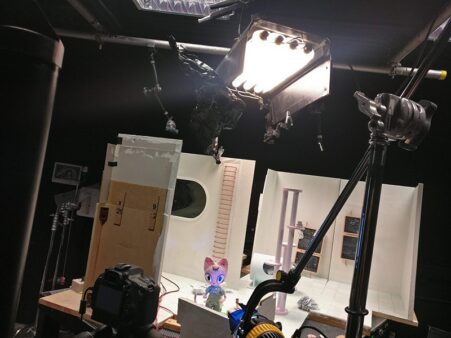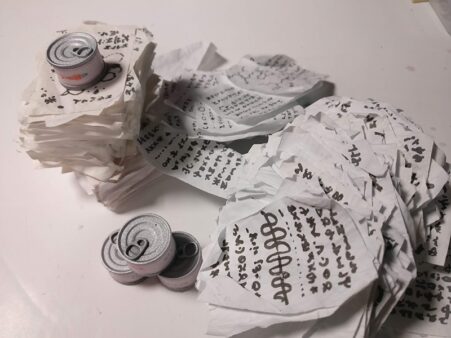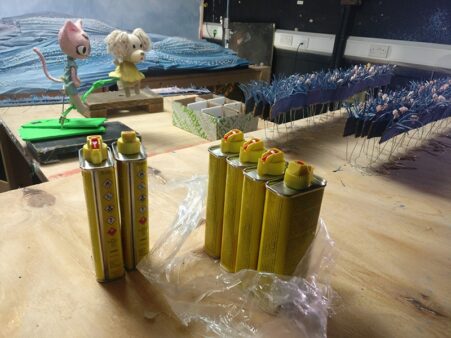Meow or Never by Neeraja Raj
We recently chanced upon the "Next Generation" award winner at the 22nd Digicon 6 Asia Awards. Turns out I had the pleasure of interacting with Neeraja Raj at a short 2 week motion design course at NID, Ahmedabad a couple of years ago. Let's read about her lovely film "Meow or Never" and what this New Kid On the Block has been upto.

AG: Tell us about your self, your background and what got you into doing what you do today?
Hi! My name is Neeraja Raj but friends call me Neej. I'm a film director who received my MA in Directing Animation from the National Film and Television School, UK (2020) and my B. Des. from the National Institute of Design, India (2017). I completed a 6-month animation apprenticeship with The Walt Disney Company India in 2016 (as part of my grad project with NID) and my most recent film called Meow or Never was shortlisted for the Student BAFTA Awards 2020. I spent the first part of my formative years in Indonesia and then high school in Dubai, my Bachelors in India and now, just finished my Masters in the UK! The ever-shifting backdrop of my youth has opened my mind from a very young age to a multitude of ideas and I believe that helps me with my film-making.
The core reason I am a filmmaker is that ever since I was a child, tales enraptured me. I lived, breathed and devoured stories. I wanted to tell my own and so I began scribbling on a piece of paper, drawing my own characters up. That is where I began and I haven't stopped since. Andrei Tarkovsky once said, “Unlike all the other art forms, film is able to seize and render the passage of time, to stop it, almost to possess it in infinity. I’d say that film is the sculpting of time.” This rings so true to my ideals as a filmmaker. I've always struggled with feeling like time is slipping between my fingers - I'd say the antidote to that is to capture our stories through the medium of film and hold them in time. My art is what will last, long after I have left the Earth and gone on to whatever there is next. I want to be able to say something meaningful into the void. Perhaps no one may listen, but I will have done my job - representing my words, my people and our stories, and that is satisfying enough to me.
AG: Tell us about Meow or Never.
The Research for Meow or Never (my grad film from the National Film and Television School) was quite a thrill, to be honest! As it was based on a talking catstronaut (a cat that is also an astronaut) and fictional planets, I went wild researching the most random things. There's something really freeing about being able to just go crazy with your imagination. However, I did draw inspiration from many real-life viral videos of cats and dogs getting along (or not), how marshmallows look melting in fire (you'll figure out why when you see the film!) and Félicette, a brilliant feline. I was aware there was a lot of love for Laika, the first dog in space, but many people don't know about the first cat in space. On Oct. 18, 1963, a French cat named Félicette became the first and only feline till date, to ever travel to space and came back to tell the tale (tail?). Her story inspired my research as well.

On the other hand, I had another type of research to tend to as well. As I'd never directed a stop-motion film of this ambitious scale, I did a lot of background research on tips and tricks to make the whole process more streamlined. If one looks, one can find brilliant resources on the internet and I stumbled upon the amazing Tim Allen. He is well known in the animation world; a key animator on Wes Anderson’s Isle of Dogs, Fantastic Mr Fox, Tim Burton’s Corpse Bride, Frankenweenie and the list goes on! I wanted to pick his brain so I wrote to him, hoping he'd be my mentor for this project and he said, 'yes!' He provided a lot of useful wisdom that he's gained over the years of experience; it was an invaluable resource to get to consult with him for Meow or Never.
Music research was especially fun because I had a brilliant composer (who happened to also be my good friend) Cora Miron who I went back and forth with over the course of 14 months, trying to figure out what kind of music style we were aiming for. I wanted it to be weird. Cora loved weird. Thus, we got along. It was lovely to work out the details of the storytelling with my close friend and co-writer Vanessa Rose, we spent a lot of time sitting and watching films to refer back to for inspiration; such as Waking Life by Richard Linklater, Anomalisa by Duke Johnson and Charlie Kaufman and more! We also watched a couple of short films that really moved us such as Negative Space by Max Porter and Ru Kuwuhata and What would Christmas be without love? by Erste Group.
AG: Share with us the production process of the film?
At the NFTS, they have several different disciplines of film-making like editing, producing, cinematography, sound design, etc. to emulate how it actually works in the industry, at the start of the second year, as directors - we pitch our grad story ideas to the different departments and build a team of our own. That was the first step in the process. This is why I really wanted to go to film school at the NFTS, it truly fosters collaborations and team-building. It helped me take more of a position as a director, working with top talents who were specialized in their own sector. Film-making, unlike novel-writing, is not an art form that can be done in isolation. The alliances with my team really built this film from the ground up.
The first two to join my team in December 2018 were my producer, Diana Podra, and my writer, Vanessa Rose. With my producer, we spent several weeks trying to sort out a plan for the entire year that would be the best way to complete this epic film. As we had a small budget to work with (provided by the school), the help we could get from outside was mostly volunteer-work, so we managed to sort out extra VFX artists and animators together. With my writer, we worked fluidly back and forth and spent a lot of time revising the script and figuring out what the motivations and intentions of the main characters in my film, Pucha and Blip, were. What I found interesting was that the story kept evolving at each stage of the production. It was only until a month before I was set to finish the film that I hit the key finale moment - it made all the difference and made the story even stronger!
Building the puppets was very fun as well. I gave over my design blueprint character concepts to my lead model maker Gemma Byrne who then went on to bring them to life. She and her team would make clay sculptures initially and once we'd come to a point where I was happy, they proceeded to make the final armatures. Model-makers Penelope Konstantara and Róisín McCallum added some lovely fabrication touches to puppy Blip's clothing and hair respectively, which really added something special to her character. Gemma was so skilled that she was able to meet even my wildest and craziest requests on the puppet design.
My production team which included my production designer - Ann Kutzer, and my cinematographer - Nathalie Pitters, were invaluable folks I worked with continuously as well. I provided Ann with my watercolour concept pieces of important scenes in the film, and she'd come back with brilliant maquettes and real-world designs of how they'd look like as a stop-motion set. She wanted to bring to life the handmade wash effects in my work, so she made entire sets fully out of paper with her help of her art team. Nathalie would then come in and do many lighting tests until we found the perfect one for the scene in particular. We'd spent months on end in the black room when I'd be animating (sometimes she'd help animate the lights, too). While all this was going on, I'd meet my editor Ed Coltman every once in a week to update the animatic with the new shots and see if we were on track for telling a good story.
We spent pre-production from December 2018 to May 2019. Production started June 1st and went on till the very end alongside post-production. The film took 14 months in total to complete in mid-Feb 2020.
As for technical aspects, my film has both 2D animation and stop-motion. 2D animation was done in TV Paint, backgrounds were watercolours arranged in Photoshop. Stop-motion was done in Dragonframe, composited in After Effects and final editing in Avid.
As for technical aspects, my film has both 2D animation and stop-motion. 2D animation was done in TV Paint, backgrounds were watercolours arranged in Photoshop. Stop-motion was done in Dragonframe, composited in After Effects and final editing in Avid.
I also knew from the get-go that I wanted to make a musical film. Music and poetry are very close to my heart. There is an underlying language to melodies that I want to tap into for I believe a story flows really well with the rhythm of music. Most films usually tag on the music and sound to fix the visuals' mistakes at the very end of the film-making process; I feel like overall, the audio is just as important to convey the message of the film. One tip I learnt at film school; It would make for a better film if you have conversations with your sound and music designer from the very start. Thus, I roped in Cora Miron right from the beginning because I knew she'd have to be part of the process early on. I also conversed regularly with my sound designer, Harry Parsons, to make sure he was in on the loop as to the updates in regards to the story.
We all worked together by mixing our talents. As I wanted to be involved in Cora's music process, I helped provide lyrics for the beautiful melodies she would make for Pucha and Blip. Cora and Harry would discuss how the sound and music would play off of each other, too. Vanessa, Cora and I had many talks together regarding script, characters and music as each one would inform the other and it had to be seamless.
Finally, though the film was not culturally based anywhere in the real world, I wanted to incorporate some touches of my Malayalee roots into it. So some hints of it can be found in the music (tablas, sitars, etc.), in the spaceship language (my production designer used Malayalam scripture in her designs) and even in Pucha's name (Malayalam word for 'cat').
Finally, though the film was not culturally based anywhere in the real world, I wanted to incorporate some touches of my Malayalee roots into it. So some hints of it can be found in the music (tablas, sitars, etc.), in the spaceship language (my production designer used Malayalam scripture in her designs) and even in Pucha's name (Malayalam word for 'cat').
AG: What were the challenges?
Meow or Never is an ambitious whimsical comedy musical stop-motion animation film that raised a lot of eyebrows when it was first pitched, but in its completion, it proved its weirdness and absurd humor in an authentic way. This was a challenge in the initial stages of making this film, convincing others that I knew what I was doing. On one hand, it's understandable because I myself hadn't made such an ambitious film before so it makes sense to not completely hedge one's bets on Meow or Never's success, on the other, you never know till you try, right? I think this was a little scary at the start, not knowing truly if I was on the right path, but with the support and dedication of my wonderful team backing me, I was able to overcome any hesitations I was having.
Another challenge was getting the story right. The story is the most crucial aspect of it all. Even if the designs are spectacular, the VFX mind-blowing, the colours stunning - what the audience carries with them in the very end is how it made them feel. So I really wanted to make sure that the core of the film was working. I took notes from my tutors Robert Bradbrook and Kim Noce who were there throughout the year to guide me and ensure that the story made sense. They also helped organize screenings at the cinema in school to get test audiences to react to it. I made sure to take down a wide variety of opinions and thoughts but only went along with those I felt were true to me and the story.
Besides that, there was also the challenge of being a good friend as well as a good director. I learned how to consolidate the views of a very diverse set of people with different opinions to see eye-to-eye on the film we set out to create. But I managed to learn how to do it in such a way where no one feels unheard; by leading productive dissension in a way that is good for team-building. Meow or Never couldn't have come together so cohesively without each moving part of the team working collectively and coherently, down from the retro pixel-graphics of Pucha's spaceship to the plinky-plonky sound effects of the alien birds - as the director I had to unify everyone onto a specific path to fulfil the vision of the story.
AG: Tell us about your style and the importance of either having or not having a personal style.
I know that many artists have this feeling of, 'I need to have a distinctly identifiable style' and while I can understand that thought, I'm not sure it's the path for me. I dislike being pigeon-holed into a certain corner of art and film-making and the last thing I would want for myself is being typecast to a certain tone or genre. Personally, I love growing and the only way one does is when one is exposed to new ideas, themes and explorations. As such, I enjoy making art in a variety of genres: horror, comedy, romance. It's amusing to me that when I post particularly gruesome artwork, my non-artist friends always worry about my mental health. One of my favourite artists is David Shrigley and when I told one of my tutors, it astonished him! ...I think I like being unbound. I like surprising people.
However, I think the world could do with more with happy, kind and soft aesthetics right now; I am drawn to that myself at the moment.
AG: How do you manage your time? With the films you've made, were there deadlines?
One of my main difficulties in life is managing my time, to be completely honest. The pandemic had exacerbated this at one point, considering that every day felt like the same (the months of April, May, June seem to have coagulated into one long month in my brain) and the realization that time is a construct was emphasized more than ever before.
I believe I need to be more organized and have set out this year to correct this, using management schemes called kanban boards and a habit tracker. I believe that I do much better when I stick to an agenda. Sometimes I just have to force myself to get started, because I can spend way too long staring at a blank paper, having a time-out with my impostor syndrome. When art is your job, you can't afford to 'wait for inspiration to strike' - you have to go out there and look for it, grab it by the horns and bring it home.
For Meow or Never, I had numerous people depending on me and my pro-activeness with time. I also had the school curriculum to follow, so with the help of my amazing Production Manager Lára Theódóra Kristjánsdóttir, we managed to stick to a schedule that was well suited for the scale of the film. It depended on me being able to fulfil my directorial duties; in the sense that my brain would have to switch to several different aspects of film-making several times a day, depending on who I was in discussion with. So for example, I'd see my Head Model Maker Gemma Byrne in the AM to finalize the puppets' ears' design, then see my Editor, Ed Coltman after to see his latest revisions to the animatic, then my Cinematographer to discuss what we were going to set up today so one of the animators can continue animating while everything else was going on. It was definitely a huge learning curve but I got acclimated towards it soon enough!
AG: Tell us about the team.
I'd like to mention that this film couldn't have come about without my amazing crew. Any wins I make, it's for them as well. So many people worked on it and from several different countries and though I can't name them all, here's me shouting out my thanks! I'd like to speak about my main team of eight - including my producer, co-screenwriter, editor, sound designer, composer, production designer, cinematographer and head model maker. They went above and beyond to make sure my vision came across in the film and I'm so lucky to have got them by my side. My producer, Diana Podra helped me orchestrate this ambitious film while sticking to a tight production schedule. Vanessa Rose is a talented screenwriter who helped me develop the characters and story I wanted to tell. My cinematographer Nathalie Pitters was my pillar of support, as we'd be stuck in the dark, hot shooting room together for hours on end; we got to know each other's obsession with cats pretty well (she has two!). My production designer, Ann Kutzer and my head model maker, Gemma Byrne collaborated so very well to ensure the aesthetics of the set design and the puppets worked cohesively as a unified whole. My composer, Cora Miron, impresses me every day with her genius - we spent countless evenings together trying to make sure Pucha's and Blip's music hit just right! Kudos to my editor, Ed Coltman, who nailed the humorous aspects of the film with his talents and my sound designer, Harry Parsons, who always knows just exactly what audio I'd want in a particular scene. I'd also like to mention my lovely trio of lead animators, Amy Fitzpatrick, Mohammed Soliman and Julian Villanueva who took turns volunteering throughout the year helping me with bringing the girls to life. I was surrounded by such talents, I'm very grateful - and so are Pucha and Blip!
AG: What are you working on currently?
I'm working on a couple of really fun projects, most of which I have to keep under wraps! One is an upcoming high-profile project that I'm directing, with renowned production studio Nexus Studios in London. They recently signed me onto their roster as a Director and it's been such a beautiful ride so far, I love working with such a talented group of people. They've made waves in the animation industry as well over the past few years, and I'm honoured to be working with them. In fact, a friend recently reminded me that we'd revelled over one of their films back in the day in 2012 while we were in our uni dorms (at NID, Ahmedabad) - when we still but glossy-eyed teenagers!
AG: How is the Coronavirus Pandemic treating you? How are you coping?
I had my big graduation showcase along with my peers in the last week of February 2020. The three-day event included a screening of our grad films at Picturehouse Central in London as well as a talk from Netflix co-founder and CEO Reed Hastings, who told students that “there has never been a better time to graduate” due to the growth and increased investment in the film industry in the UK. Little did we know what was to come! Within a week, COVID-19 took over the UK. Like everyone else, I lost a couple of opportunities and it wasn't the big fun finale celebration in the London streets my friends and I had imagined for ourselves once we finished our films. I was also living alone at the time so it was quite scary when the grocery stores nearby started emptying out due to people stockpiling; I remember trying to get rice or pasta several days in a row, unsuccessful every time. Every day in March something new and scary was unfolding, it was quite unsettling. Before lock-down in London officially began, my relatives invited me to go live with them for a bit till the panic died down (we thought it would be just a month or so - turned out to be four!). They were my angels in those times, it was so nice to be with family and nourish and comfort each other, I'm grateful every day for them! My own parents and brother live in Dubai, and all flights to the United Arab Emirates had been banned until they reopened mid-July, when I immediately flew back.
As for creatively, I did need a mental break after the burnout of finishing my film in late February, so I spent much of lock-down stressed out about the state of the world, poetry-writing and laying in the back-garden thinking existential thoughts. At the same time, I was feeling guilty for being stressed out because I was very much aware I had far more support and privilege in comparison to so many others during this pandemic. It was an interesting time for sure.
AG: What do you feel about the future (personal, industry, humanity!) in the current COVID scenario and beyond?
The future! Wow, scary question, haha. Personally, I hope to be a well-established filmmaker who continues to put out new, diverse, and interesting films. There aren't many POC female international film directors out there as there should be - I hope to help bridge that gap. I’ve been lucky enough to work with some amazing and talented folks in different sectors of film-making, and so developing into a great director alongside them is something I’m really excited about. Almost everyone in the world has ideas, but the ability and strength to bring those ideas to life is the mark of a true director and I hope to hone that skill to the finest it could be. I don't think one ever stops learning. I don't particularly see myself settling down and being complacent at all; I want to keep running, moving, growing, to be the best filmmaker I can be and then some!
As for the film industry, we need to take a step back and really look at the systemic structures in place that are furtively encouraging the lack of inclusivity. Only then can we make strategic choices to influence change from within. Each and every person with privilege in the industry should make conscious decisions going forth - from whom to hire for a film with a particular subject matter to working on getting rid of internal subconscious biases. It is only when we work together collectively as a group, can we make a shift of change in our industry. We must broaden our intellectual vision to include a wider range of perspectives of races and gender; that is how we grow. People far wiser and with more experience have made art and written books on this topic, so I suggest reading and constantly expanding one's world view by reading other's perspectives. Some creators I can recommend are Chimamanda Ngozi Adichie, Ava DuVernay, Ray Bradbury, Khaled Hosseini, Bong Joon-ho, Haruki Murakami and many more.
As for humanity... now, more than ever, we need to stick together.
As for humanity... now, more than ever, we need to stick together.
AGI brings the Indian Animation community together, and it's so brilliant to see! We need fresh faces and voices to tell unique and interesting stories only we can tell, so any venture encouraging this is always a positive. It's lovely to see other Indian directors and artists' works and learn from them or take a walk through their journey vicariously. Especially in these times, more than ever, we need to read and expand our horizons to learn about other perspectives and world-views. And what better way than showcasing this than through our creative work and the process that goes behind it! AGI providing a platform for this is truly ingenious and I feel so honoured to be interviewed by them.
